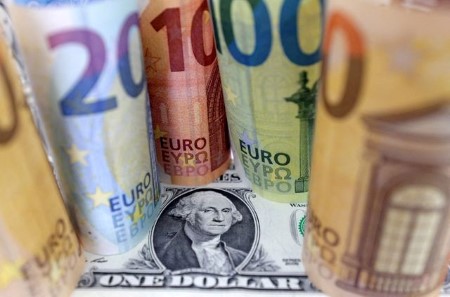




Philippines Trade Update: Trade trajectories trend along
 DOWNLOAD
DOWNLOAD

Policy Rate Updates: Double cut finale
 DOWNLOAD
DOWNLOAD

Monthly Economic Update: One for the road
 DOWNLOAD
DOWNLOAD


Biggest two-month rally in decades rescues beaten-up bond markets

LONDON, Dec 28 – A huge two-month rally in bond prices, powered by expectations that central banks will soon be cutting interest rates, has rescued fixed income markets from an almost unheard-of third straight year of declines.
The US 10-year Treasury yield, the benchmark for borrowing costs globally, has dropped 50 basis points (bps) in December after falling 53 bps in November. Its two-month fall is the biggest since 2008, when the Federal Reserve was slashing rates during the global financial crisis.
ICE BofA’s global broad bond market index, which includes government and corporate debt, has rallied roughly 7% over the last two months — its strongest eight-week period on record, according to LSEG data which goes back to 1997.
The sharp drop in yields, which move inversely to prices, has eased pressure on companies and households as well as housing markets and governments that in October faced the steepest borrowing costs in more than a decade.
It has also been a balm for highly indebted countries such as Italy, where bond yields are poised for their biggest monthly fall since 2013.
HAWKS TURN DOVISH
Central bankers abruptly changed their tone on inflation in December, fueling investors’ rate-cut bets. That followed a blockbuster November, when data showed US and European inflation falling much faster than expected.
“We were surprised by the strength of this rally,” said Oliver Eichmann, head of European fixed income at asset manager DWS.
The Fed’s Christopher Waller and the European Central Bank’s Isabel Schnabel, both previously renowned monetary policy hawks, softened their language in December and acknowledged – in Schnabel’s words – a “remarkable” fall in inflation.
The Fed triggered fresh market euphoria when it used its December meeting to say that rate hikes were over. Fed Chair Jerome Powell notably declined to push back against market bets on deep cuts next year, although the Fed’s “dot plot” envisaged three 25 bp cuts in 2024, compared to the more than 150 bps priced in by markets.
“That was a surprise,” said Jamie Niven, bond portfolio manager at asset manager Candriam. “And it does leave you with the question, what are they seeing that maybe the market isn’t?”
The riskier parts of the bond market, increasingly attractive as investors bet on rate cuts next year, have rallied the most.
Italy’s benchmark 10-year bond yield IT10YT=RR is on track to fall more than 75 bps in December, its biggest monthly drop since the eurozone debt crisis in 2013.
Meanwhile, the spread of junk bond yields over benchmark risk-free rates in the United States and Europe has fallen to its lowest level since the second quarter of 2022.
The two-month jump in bond prices has saved the market from the ignominy of a third year in the red, something not seen in 40 years or more, after two down years driven by inflation and rate hikes.
Bond indexes were in negative territory in October as US growth and inflation kept surprising economists, bolstering the case for higher rates for longer.
The ICE BofA broad bond market index is now heading for an annual gain of around 5%.
Not all investors are convinced their luck will hold.
“It’s gone too far,” said DWS’s Eichmann. He expects more “push-back” from central bankers in the new year and fewer rate cuts than priced in by markets.
(Reporting by Harry Robertson; editing by Dhara Ranasinghe and Christina Fincher)
This article originally appeared on reuters.com





 By Reuters
By Reuters